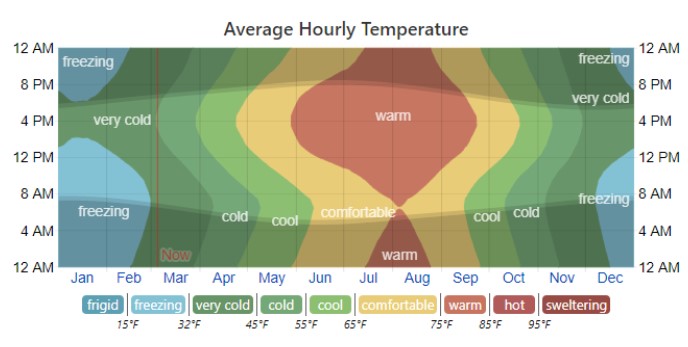Figure 5 Average Hourly Temperature

South Korea is located in the Northern Hemisphere. It belongs to the region of East Asian monsoonal, which has four distinct seasons patterns reasonably equivalent to northeastern America throughout the year (Korea – Climate, 2021). From April to June is spring, then following the summer in July and August. September, October, and November are autumn. Last, the chilly, cold, and snowy winter remains from December to March.
Overall, in summer, July is the hottest month in Seoul, with an average temperature of 75°F, but faces typhoons, often torrential rain in the year (Travel Guide, 2020). It creates rigorous storms accumulating into significant flooring. For this reason, mosquitoes sustain a substantial concern in the late summer (Wells, 2018). Heavy humidity is another problem during the summer months. January is the coldest reach to 25°F on average and extends below freezing degrees occasionally (Travel Guide, 2020). Hwangsa, the yellow dust throughout the spring, comes from China’s industrialization and Mongolia’s desert (Korea – Climate, 2021). Thus, air pollution definitively is a significant consideration during spring.
In general, Winter temperature is slightly cooler in Seoul than in other cities like Daegu or Busan (Wells, 2018). Jeju Island, instead, about 10 degrees higher than mainland Korea, entices many enticing visitors.
Page Author: ChiWai Li




